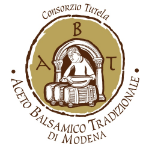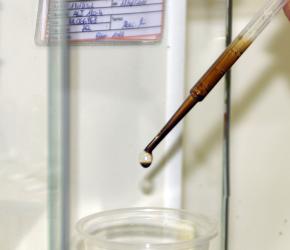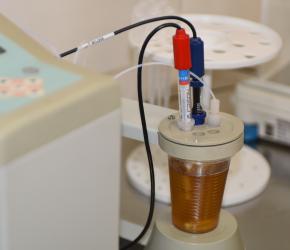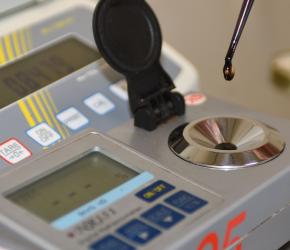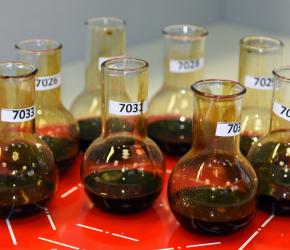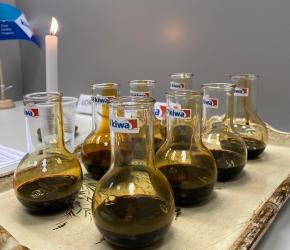Tasting and analysis
-
-
Regulated withdrawal from barrels
-
Laboratory testing
-
Approval by tasters
-
Official descriptors for tasting
-
This is the only P.D.O. product which, even after the certified ageing period specified in the Production Specifications, can only call itself “Aceto Balsamico Tradizionale di Modena”once it has passed a series of organoleptic tests carried out by a panel of expert tasters. This validation process is the final stage which certifies the product’s organoleptic characteristics after the extremely long ageing period specified in the Production Specifications, authorising its bottling and, ultimately, the designation of Traditional Balsamic Vinegar of Modena P.D.O. As already explained, the production process is “continuous” and, after a minimum of 12 years of ageing, if the producer deems that the product has achieved the necessary characteristics, he proceeds to withdraw a small amount annually from the last barrel in the battery.
Each year afterwards, he may withdraw a similar amount of product, amounting to a maximum of 3% of the content of the battery (which normally ranges from 100 to 300 litres); if the battery has been active for over 25 years, only 1.5% of product may be withdrawn and classed as Extravecchio (extra-old). This therefore represents a tiny annual amount for each battery and the producer is free to decide whether to combine the yields from multiple batteries (keeping aside only the Extravecchio product) to form a single batch, or to keep the product from batteries of exceptional quality separate. The product is then taken to the bottling centre where it is immediately tested in order to establish its chemical and physical properties: density and acidity. Density must be >1.24, while acidity, which is calculated in weight, must be > 4.5. If everything conforms to the requirements, the container remains sealed until it is submitted for the attention of the official representing the supervisory body, who withdraws three samples from each batch and reseals the container.

The official anonymises the samples and convenes a panel of at least five certified tasters. If the sample is given approval, the official proceeds with more detailed analysis of documentary compliance and, in case of a positive outcome, communicates the authorisation to the bottling centre.
Product tasting consists of a sensory evaluation of the so-called organoleptic characteristics, namely those perceived by the three main senses: sight, taste, smell. The visual examination, using candlelight, is used to evaluate density, colour and clarity; the olfactory examination, which is considered the most important, analyses defectiveness, delicacy, intensity and acidity; the gustatory examination, which seeks to confirm the olfactory impressions, analyses fullness, intensity, flavour, harmony and acidity. If the product is not granted approval, it generally returns to the vinegar loft because it needs to continue ageing.
